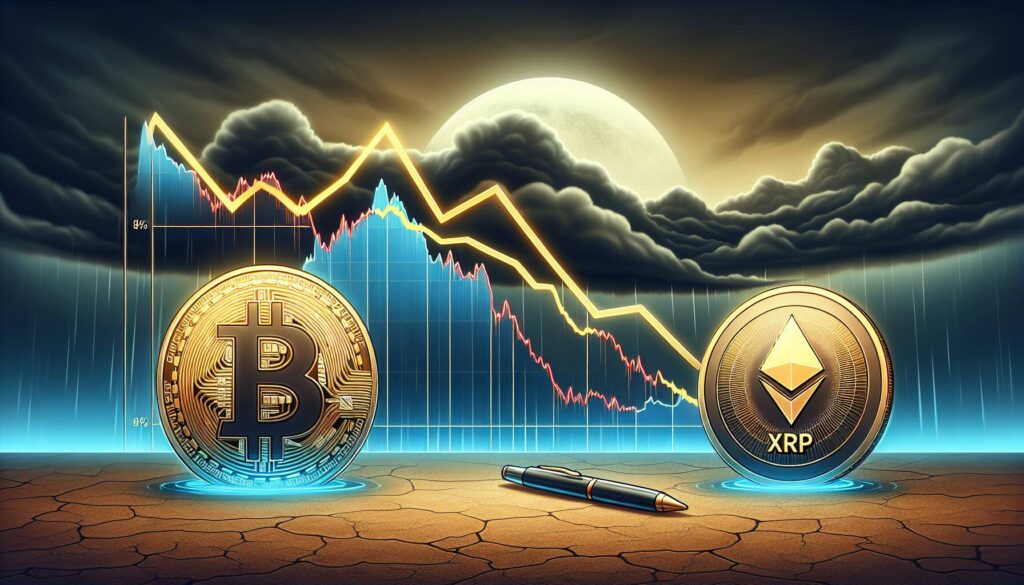SINGAPORE — The competitive landscape of decentralized exchanges (DEXs) is shifting rapidly, as industry leaders and newcomers alike vie for dominance in this burgeoning sector. In a recent interview, BitMEX CEO Stephan Lutz expressed his concerns about the sustainability of popular DEXs like Hyperliquid and Aster, suggesting that their incentive-heavy business models may be inherently vulnerable. With Aster recently surpassing Hyperliquid in 24-hour trading volume, a fierce battle has emerged amongst these platforms, leading to a wave of new DEX launches aimed at capturing market share.
At the Token2049 conference in Singapore, Justin Sun announced a new DEX, heightening the competition in an already dynamic environment. However, Lutz cautioned that the excitement surrounding these new options could be fleeting. He described many DEXs as acting like inherent “pump-and-dump schemes,” where user engagement is reliant on token incentives and rewards. While acknowledging the appeal of access without intermediaries, he warned that this strategy could lead to instability and significant risks for retail traders.
In stark contrast, centralized exchanges, led by the likes of Coinbase, are seen as secure players capable of withstanding market fluctuations. Lutz emphasized BitMEX’s journey to balance both centralized and decentralized models, asserting their commitment to accommodate institutional needs. Recently, the company shifted its data infrastructure from AWS Dublin to Tokyo, where it experienced substantial liquidity growth, showcasing Japan’s pivotal role in the global trading landscape.
Looking ahead, Lutz anticipates a different crypto cycle characterized by greater institutional involvement. He believes Bitcoin (BTC) may start to behave more like a “real asset,” with reduced volatility and sustained market growth. This transition suggests that while new DEXs might offer significant leverage, the overall trajectory of Bitcoin could indicate a more mature asset class, moving towards consistent growth rather than dramatic price swings.

Impact of Emerging Decentralized Exchanges on the Crypto Market
Key points regarding the evolution of decentralized exchanges (DEXs) and their implications for market participants:
- Emergence of New Competitors:
- Aster and Lighter are challenging Hyperliquid’s dominance in the perp DEX sector.
- Aster recently surpassed Hyperliquid in 24-hour trading volume.
- Intensified Competition:
- Justin Sun announced a new DEX at Token2049, signaling ongoing innovations and competition in the marketplace.
- This race to launch new DEXs highlights the increasing market interest and participation.
- Inherent Volatility and Risk:
- BitMEX CEO, Stephan Lutz, warns that DEXs operate on incentive-heavy models that may lead to a pump-and-dump environment.
- Retail traders could face high volatility and risk by pursuing outsized yields in these rapidly changing markets.
- Centralized Exchanges as Stable Players:
- Centralized exchanges like Coinbase are expected to maintain their dominance amid churn in the DEX market.
- Increased institutional participation could provide stability and reduce market volatility.
- Strategic Moves by BitMEX:
- BitMEX has relocated its infrastructure to Tokyo to benefit from higher trading volumes and reduced latency.
- This move has resulted in significant boosts in liquidity for their contracts.
- Future Market Expectations:
- Lutz predicts a different crypto cycle with BTC behaving more like a “real asset,” featuring less volatility.
- With the introduction of spot ETFs, BTC’s market has indicated a trend toward more stability.
“The market will still follow the same rules and characteristics, but with lower volatility as it becomes a real asset embraced by the world’s wealthy.” – Stephan Lutz
Decentralized Exchanges: The Competitive Landscape and Strategic Shifts
The rapid evolution of the decentralized exchange (DEX) market is raising significant questions about the sustainability of incentive-heavy business models. Notably, platforms like Hyperliquid are experiencing intensified competition from emerging players such as Aster and Lighter, who are rapidly capturing market share by outperforming incumbents in trading volumes. This competitive dynamic not only alters the landscape for current DEX operators but also invites potential pitfalls tied to volatility and liquidity retention.
Advantages of New Entrants: Aster’s recent triumph in surpassing Hyperliquid in daily trading volume exemplifies the growing agility in the DEX sector. By leveraging innovative strategies and capitalizing on user incentives, these newer platforms appeal to retail traders eager for volume-driven rewards. Furthermore, Justin Sun’s announcement of a new DEX underscores the continuous influx of interest and resources into this space, potentially offering traders a wider array of options.
Challenges Faced: However, as BitMEX CEO Stephan Lutz suggests, the very incentives that attract users to these DEXs can create an unsustainable cycle, often likened to a ‘pump-and-dump’ dynamic. This creates an inherent risk for traders who chase high yields, as the volatility and uncertainty associated with such platforms can lead to significant financial loss. Lutz’s cautionary stance indicates that while current trends may seem exciting, the sustainability of such growth remains in question.
Who Stands to Gain or Lose: Retail traders drawn to the enticing yield opportunities provided by these new DEXs could face considerable risks if market dynamics shift unfavorably. On the flip side, institutional players might find merit in investing across both decentralized and centralized exchanges. Lutz’s insights suggest that centralized exchanges, especially those that can adapt to new market conditions, might maintain resilience as the DEX fad waxes and wanes. Institutions seeking long-term stability may prefer the trust and infrastructure offered by established platforms like Coinbase over the uncertainties of newer DEX ventures.
This complex interplay of opportunity and risk marks a transformative phase for the crypto trading landscape as market participants navigate the choppy waters of decentralization against the backdrop of evolving market expectations.

















